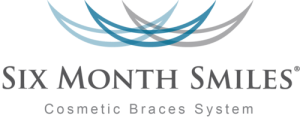Dr. Robin Rutherford has been providing braces for over 20 years and rarely needs to refer a patient to a specialist. This makes it more convenient for patients who have had orthodontic treatment with us because, if you need a teeth cleaning, a filling, or wisdom teeth removal, we can do all these things at the same appointment. Ultimately, this can mean fewer dental appointments for you by accomplishing all your needs here under one roof as opposed to multiple visits to specialists all over town. We offer a variety of orthodontic techniques, including traditional braces and the innovative Six Month Smiles® treatment.
- What Is Orthodontics?
- Orthodontics for Teens
- Adult Orthodontics
- Orthodontic Benefits
- Types of Braces
- Do Braces Hurt?
- Braces Maintenance
- Braces Alternatives
- Additional Orthodontic FAQs
What Is Orthodontics?
Orthodontics is the area of dentistry that focuses on the positioning of the teeth and jaws, including their alignment and how they bite together. With the use of braces, patients of all ages can achieve straighter teeth for an improved smile appearance as well as a healthier mouth for the future. Whether you are looking for adult orthodontics or seeking a professional to help your child achieve straight teeth, Dr. Rutherford can determine the most beneficial solution for your needs. To learn about our effective braces options, read about our treatments below and contact us to schedule an appointment.

Does My Child or Teen Need Orthodontic Treatment?
Teens are the most common patients to receive orthodontic treatment. Once adolescents reach age 13, Dr. Rutherford will evaluate their occlusion and tooth alignment to determine if orthodontic care is needed and, if so, the extent of care required. He will recommend the most appropriate orthodontic system to help them achieve straight, beautiful teeth to improve their confidence and oral hygiene.
Should I Pursue Orthodontic Treatment as an Adult?
Although orthodontics are often thought to be for younger individuals, more and more adults are choosing to get braces to correct alignment issues. Some of these patients have had orthodontic treatment when they were younger, but their teeth have since shifted. Others receive braces for the first time as adults, finally achieving the straight smile they have always wanted. Whether they choose traditional braces or a more discreet system like Six Month Smiles®, adults can experience better oral function and health with lasting results.
What Are the Benefits of Orthodontic Treatment?
Orthodontic treatment offers numerous benefits beyond just a straighter smile, including:
- Improved oral health – Properly aligned teeth are easier to clean, reducing the risk of cavities and gum disease.
- Enhanced function – Correct alignment aids in better chewing capabilities and can alleviate jaw pain and TMJ disorders.
- Aesthetic improvement – Straight teeth can boost self-confidence and positively affect social interactions.
- Prevention of wear – Orthodontic treatments can help in preventing irregular wear on tooth surfaces and damage to surrounding bone and gums.
- Long-term savings – By maintaining oral health, orthodontic treatment can reduce the need for costly dental procedures in the future.
- Overall well-being – A healthier bite promotes better oral and general health, enhancing quality of life.
What Are The Different Types Of Braces?
Traditional Braces
The most popular form of braces utilizes metal materials to shift the teeth into place. This typically involves a series of brackets and connecting wires that are adjusted to gradually and gently correct teeth alignment. The process has been used for decades and has been improved over the years to be a more comfortable and convenient solution. Traditional braces have proven extremely effective at straightening teeth and are typically considered the ideal solution for those with severe misalignment issues. On average, candidates can achieve their ideal teeth positioning within 18 to 24 months, though this will vary based on the extent of a patient’s needs. Similarly, the cost of traditional braces will be different for each case, depending on factors like the complexity of the patient’s needs, if supplementary oral appliances are needed, and the duration of treatment. Our team can discuss the details of your treatment plan with braces once Dr. Rutherford has had the opportunity to examine your mouth and determine the best course of action.
Six Month Smiles®
 The Six Month Smiles® braces system offers a more discreet straightening system. It is designed to help you straighten your teeth more comfortably than traditional braces. The solution gets its name by the short period of time it takes to reach optimal results. Using clear brackets and tooth-colored wires that are much smaller than traditional braces, you can achieve the straight teeth you desire without the bold look of metal braces.
The Six Month Smiles® braces system offers a more discreet straightening system. It is designed to help you straighten your teeth more comfortably than traditional braces. The solution gets its name by the short period of time it takes to reach optimal results. Using clear brackets and tooth-colored wires that are much smaller than traditional braces, you can achieve the straight teeth you desire without the bold look of metal braces.
Do Braces Hurt?
Getting your braces should not be painful, but soon after having your brackets and wires placed, you may start to feel some discomfort. This is due to the braces system starting to put pressure on the misaligned teeth as they begin shifting to their ideal position. Patients who report having pain with their braces typically describe this as a dull soreness. Over-the-counter pain medications can often help control this discomfort. The most common time period when patients feel uncomfortable is after their braces have been tightened, which typically occurs multiple times throughout the course of their braces treatment.
How Should I Take Care Of And Clean My Braces?
Maintaining good oral hygiene is as important as ever when you have braces. The brackets and wires can often trap food, so you should brush and floss your teeth regularly. Dr. Rutherford will help you understand the best way to floss around your braces, as well as other practices to help you maintain good oral health throughout the duration of your braces treatment. In addition to adhering to good hygiene habits, you should avoid certain foods that can get lodged between your braces and gumline, such as hard candies, popcorn, and gum.
Are There Any Alternatives To Braces?
Braces are the most effective way to straighten severely misaligned teeth, as well as improve poor occlusion. However, patients with minor gaps or mild tooth misalignment may be eligible for an alternative solution, such as porcelain veneers or cosmetic bonding. Veneers are used to improve the size, shape, and color of the teeth. As the thin porcelain shell is placed over a tooth, this can help minimize an adjacent gap. Dental bonding works in a similar way to reduce spaces between teeth, as a composite resin material is applied to the tooth’s surface.
Additional Frequently Asked Questions About Orthodontics
Can a dentist provide orthodontic treatment?
Although orthodontists are most commonly associated with orthodontic treatments, general and cosmetic dentists can also provide braces and aligners. Dentists who have received training in orthodontics may offer basic services such as clear aligners or treatments to promote minor tooth movement. However, for more complex cases involving significant alignment issues or malocclusions, a consult with an orthodontist may be recommended.
Do I need a retainer after braces?
Wearing a retainer after braces is essential for maintaining the new alignment of your teeth. Retainers help stabilize the teeth in their new positions during the crucial period of bone and tissue adaptation. If you opt not to wear your retainer, your teeth may shift back to their original positions—a process known as relapse.
In many cases, patients may be able to reduce their use of the retainer after a specified period of time. Our dentist will provide detailed recommendations on retainer wear once your orthodontic needs have been evaluated.
Does insurance cover orthodontic treatment?
Insurance coverage for orthodontic treatment can vary widely. Many dental insurance plans include some level of orthodontic coverage, but the extent and conditions of coverage differ significantly among providers and policies. Typically, insurance may cover a portion of the costs, subject to deductibles, co-pays, and caps on total benefits. It is important to review the specifics of your insurance policy or consult with your insurance provider to understand what is and isn’t covered under your plan.
Contact The Art of Dentistry
If you are ready to obtain the smile of your dreams, please contact our office to schedule your one-on-one appointment with Dr. Rutherford. We look forward to seeing you!







